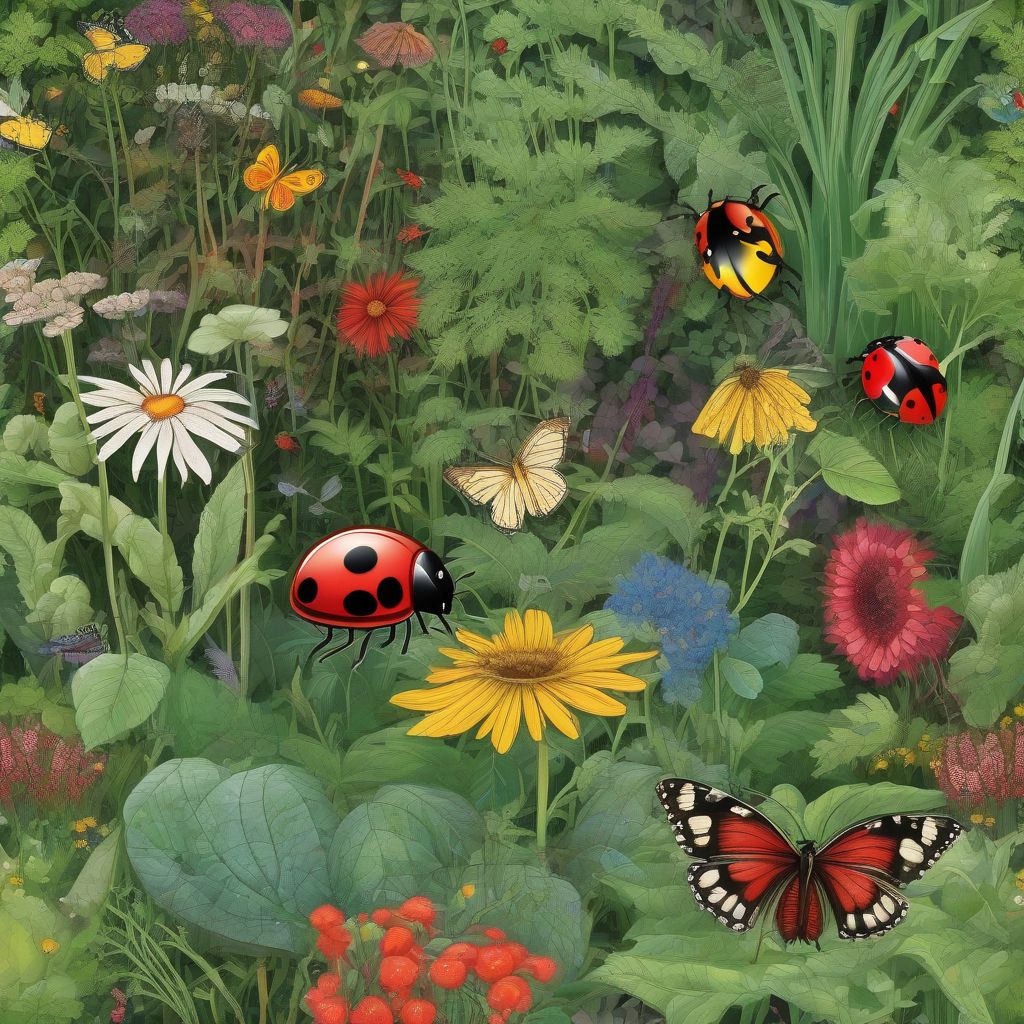Have you ever dreamt of a garden bursting with vibrant vegetables, free from the constant battle against pests? It’s a dream shared by many gardeners, and achieving it is more about harmony than warfare. Creating a balanced ecosystem is the key to naturally reducing pests and fostering a thriving garden. It’s about working with nature, not against it. Let’s explore how you can transform your garden into a haven for beneficial insects and minimize the need for harmful pesticides.
Understanding the Power of a Balanced Ecosystem
A balanced ecosystem mimics nature’s intricate web of life. It’s a place where diverse plants, insects, and microorganisms interact, creating a self-regulating environment. When this balance is disrupted, pests can take hold. Think of it like a seesaw: when one side becomes too heavy, the other side lifts off the ground. Similarly, when one species (like a pest) becomes dominant, it throws the entire ecosystem out of balance.
Diversity is Key: Planting a Variety of Species
One of the most effective ways to create a balanced ecosystem is by planting a diverse range of plants. Monoculture – planting only one type of crop – creates a feast for pests that specialize in that particular plant. By interspersing different species, you create a more complex habitat that’s less appealing to specific pests. Companion planting, a technique where certain plants are grown together to benefit each other, can further enhance this effect. For instance, planting basil alongside tomatoes can deter tomato hornworms. Learn more about companion planting methods for pest prevention at this link: companion planting methods for pest prevention.
The Importance of Soil Health: A Foundation for Healthy Plants
Healthy soil is the bedrock of a balanced ecosystem. Rich, fertile soil teeming with beneficial microorganisms provides plants with the nutrients they need to thrive, making them more resistant to pests and diseases. Incorporating organic matter, like compost or worm castings, improves soil structure, nutrient content, and microbial activity. Learn more about the benefits of worm castings in your garden by clicking here: benefits of using worm castings.
Inviting Beneficial Insects: The Pest Control Army
Beneficial insects are your allies in the fight against pests. Ladybugs, lacewings, and parasitic wasps are just a few examples of insects that prey on common garden pests. Attracting these helpful creatures involves providing them with food sources (like nectar and pollen) and shelter. Planting flowering plants and creating insectary habitats can lure these beneficial insects to your garden.
Practical Steps to Build Your Balanced Ecosystem
Now that we understand the principles, let’s get practical. Here are actionable steps you can take to create a balanced ecosystem in your own garden:
Soil Enhancement: The Foundation of a Healthy Garden
Start by improving your soil health. Regularly add compost, worm castings, or other organic matter to enrich the soil and encourage microbial activity. This creates a strong foundation for healthy plants that are better equipped to withstand pest attacks.
Plant Diversity: Creating a Complex Habitat
Embrace diversity in your planting scheme. Intermix different plant species to create a more complex habitat that discourages pest infestations. Research companion planting combinations to maximize the benefits and deter specific pests.
Provide Shelter: Welcoming Beneficial Insects
Offer shelter for beneficial insects. Insect hotels, piles of rocks or logs, and dense shrubs can provide refuge for these helpful creatures. Ensuring a constant water source, such as a shallow dish of water with pebbles, is also crucial for their survival.
Reduce Pesticide Use: Protecting the Ecosystem
Minimize or eliminate the use of synthetic pesticides. These chemicals can harm beneficial insects and disrupt the delicate balance of the ecosystem. Opt for natural pest control methods like introducing beneficial insects, using insecticidal soap, or employing physical barriers like netting. For example, dealing with aphid infestations naturally can be highly effective. Read more about how to control aphids naturally in your garden here: how to control aphids naturally.
Monitor and Adjust: Observing Your Ecosystem
Regularly monitor your garden for signs of pests and diseases. Early detection allows you to address issues before they become major problems. Observe the interactions between plants and insects to understand the dynamics of your ecosystem and make adjustments as needed. Knowing how to identify nutrient deficiencies is crucial for maintaining healthy plants and preventing pest problems. Find more information here: how to identify nutrient deficiencies.
 Balanced Ecosystem Garden
Balanced Ecosystem Garden
Conclusion: Reaping the Rewards of a Balanced Ecosystem
Creating a balanced ecosystem in your garden is an ongoing process, but the rewards are well worth the effort. By working with nature, you can reduce pest problems, enhance plant health, and create a thriving garden that requires less intervention. Remember, a balanced ecosystem is about fostering diversity, nurturing soil health, and inviting beneficial insects. This holistic approach not only reduces the need for harmful pesticides but also creates a more resilient and sustainable garden for years to come. We encourage you to share your experiences and thoughts in the comments below. Let’s build a community of gardeners dedicated to creating healthy, balanced ecosystems!



